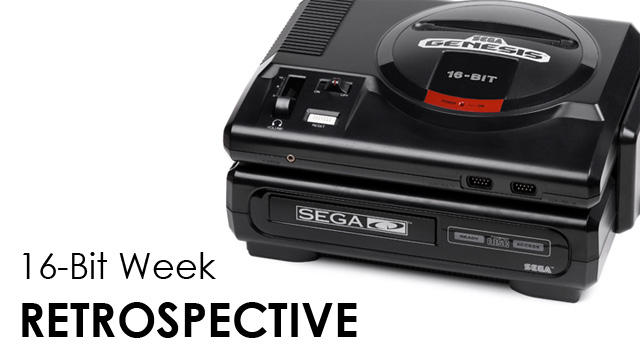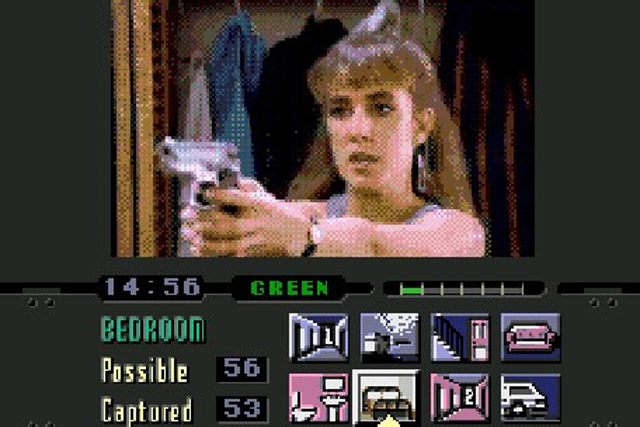
Contributed by: Dave Voyles
Managing Editor, ArmlessOctopus.com
“Why you wear dem shades at night?” the intimidating man asked in a heavy, although fake Jamaican accent as he peered around the room before entering through the front door. Despite its cheesy dialogue, campy characters, low production quality, and brutal difficulty, I thoroughly enjoyed what would be my first of many full motion video, or FMV experiences. The title was Night Trap, and it was one of the largest games of its time, due in large part to the hearing Congress was currently holding over the title and various other “violent” games of the period. This was the beginning of my short lived infatuation with the Sega CD and numerous other consoles Sega would support simultaneously. That in itself is an entirely different issue which I’ll address later.
The Sega CD was an add-on device for the Genesis, and either sat parallel or beneath the Genesis depending on which model of the console you owned. At the time of its release, 1992 here in America, it was groundbreaking, as it was the first popular device to use discs as a form of media, as opposed to the industry standard of cartridges. Each form of media came with their own sets of benefits and pitfalls, but ultimately the compact disc had yet to prove itself as a sustainable medium, despite being used to hold audio data for nearly a decade. Cartridges of the day typically contained 8 to 16 megabits of data, while a CD had the potential to store 5120 megabits. The Sega CD was powered by a beast of a CPU, which clocked in at a whopping 12.5 Mhz, nearly twice as fast as Genesis’ 7.61 Mhz and held a palette of 512 colors, although only 64 could be displayed simultaneously, as opposed to the Genesis’ 64 colors total.

Ultimately, the console wouldn’t prove the test of time and Sega discontinued support for the platform in early 1996. A number of factors contributed to this, including the fact that many companies were not ready to adapt to the larger capacity of the storage medium, especially when they were hindered by the game systems’ limitations. The over saturated market of FMV games on the platform alongside the critically unfavorable reviews to the titles would lead to poor sales. For the most part, the “fully interactive” experiences would prove to be nothing more than low quality video with the occasional button press that couldn’t justify the $50 cost in gamer’s minds. The Sega 32X would launch in November of 1994 and offered increased graphical and aural benefits to both the genesis and Sega CD. Supporting three consoles at one moment proved difficult for Sega, especially with the looming launch of the Sega Saturn which hit North American shores just six months later.
Fortunately, I capitalized at the right moment and took full advantage of the system just as it was becoming defunct. Many gamers on America’s East Coast no doubt remember Funcoland, which essentially was GameStop of the mid 90’s. Each month they would publish a newspaper which listed all of the titles they had available for each console at the time, along with the price of a new purchase alongside the cost of a used one. Many days were spent throughout my childhood eagerly scanning the documents for the prices of what I had, at the time at least, considered gems. Prices fluctuated based on availability, so titles which launched with the console, Sewer Shark for example, went for as little as .50.

The production costs of manufacturing a title on a disc was far less than that of its cartridge-based counterpart, and was also a direct cause for the lower sale cost. As an unemployed elementary school student, I was forced to acquire funds by any means necessary; whether that meant shoveling snow through the heart of a New York winter, or making my weekly rounds with the lawn mower. Regardless, I would march down to that store each week to trade in my recently purchased, (and completed) title, in exchange for the next. In all, I’d be comfortable stating that I’ve owned perhaps 80% of the Sega CD’s library. In total it couldn’t have been more than 150 games, all of which cost nearly what would be the equivalent of two or three new retail titles today.
By the end of its life, the Sega CD had sold 6 million units, not bad for the time, but paltry by today’s standards when you consider the Xbox 360 currently has 53.6 million units sold as of March. Although Sega still operates as both a software developer and publisher, their days of dominance in both the arcade and home console industry still linger in my mind. Sega, it seems, was a company which could not avoid the inevitable downfall of the arcade industry, and failed to adapt to a changing home console market. Perhaps their day will return, to remind aging gamers of what they once were, and introduce an entirely new generation of gamers to the magical characters such as Sonic the Hedgehog while he was in his prime through the early 90’s.

No Comments